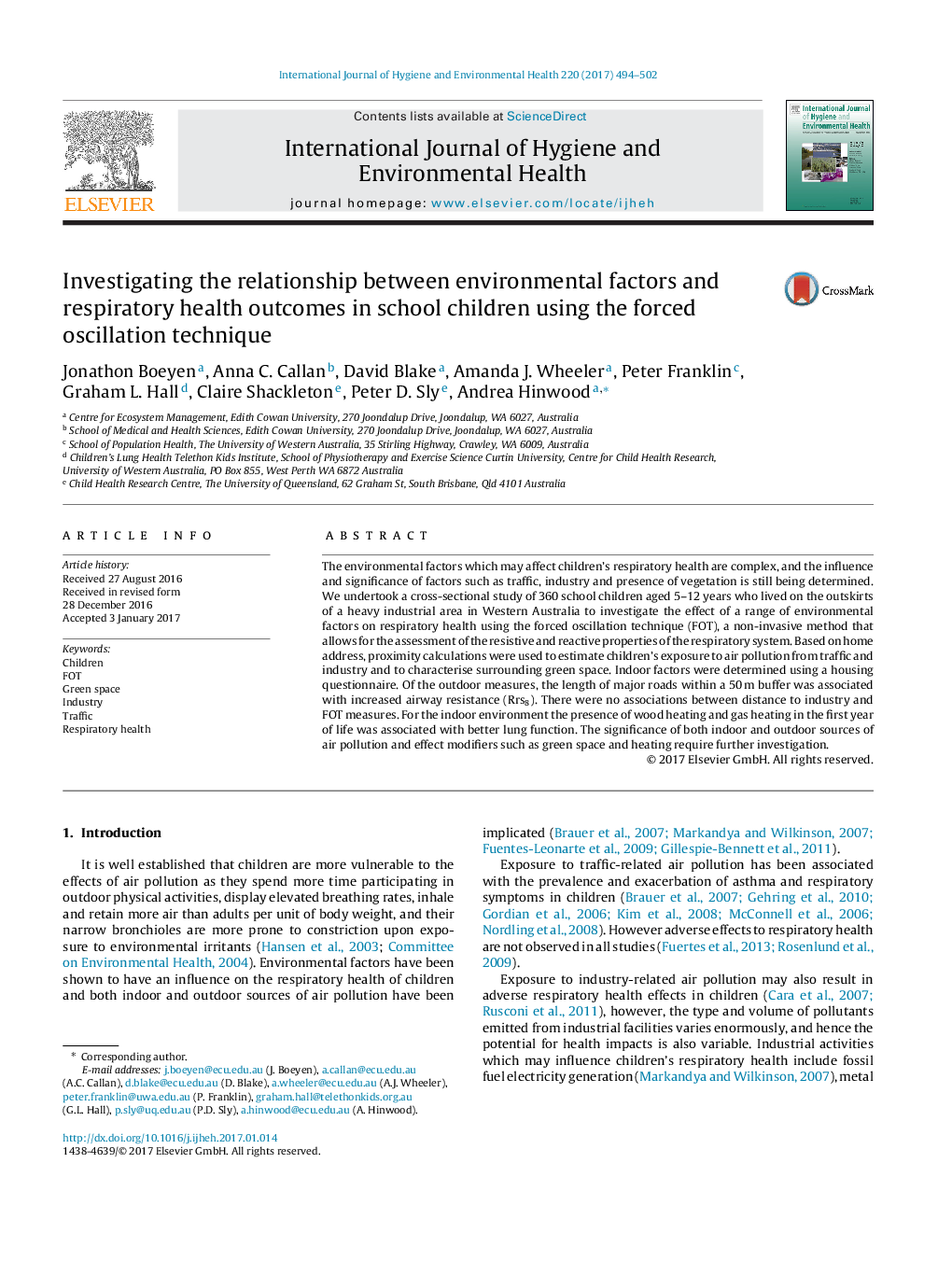| Article ID | Journal | Published Year | Pages | File Type |
|---|---|---|---|---|
| 5560512 | International Journal of Hygiene and Environmental Health | 2017 | 9 Pages |
The environmental factors which may affect children's respiratory health are complex, and the influence and significance of factors such as traffic, industry and presence of vegetation is still being determined. We undertook a cross-sectional study of 360 school children aged 5-12 years who lived on the outskirts of a heavy industrial area in Western Australia to investigate the effect of a range of environmental factors on respiratory health using the forced oscillation technique (FOT), a non-invasive method that allows for the assessment of the resistive and reactive properties of the respiratory system. Based on home address, proximity calculations were used to estimate children's exposure to air pollution from traffic and industry and to characterise surrounding green space. Indoor factors were determined using a housing questionnaire. Of the outdoor measures, the length of major roads within a 50Â m buffer was associated with increased airway resistance (Rrs8). There were no associations between distance to industry and FOT measures. For the indoor environment the presence of wood heating and gas heating in the first year of life was associated with better lung function. The significance of both indoor and outdoor sources of air pollution and effect modifiers such as green space and heating require further investigation.
